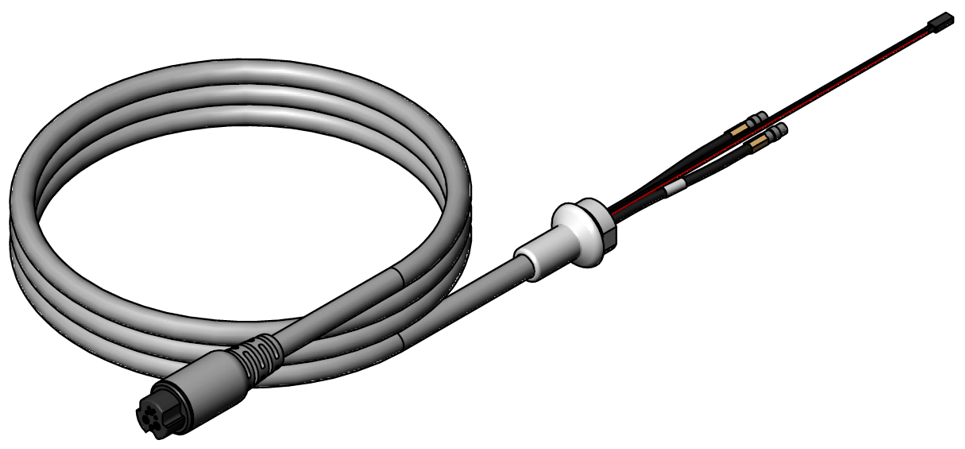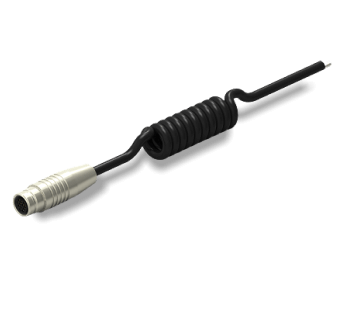As a high-end cable assembly supplier to the Military, Medical, Geophysical, Commercial Aviation markets, let us put our expertise to work for you. Winchester Interconnect Micro, formerly known as Ulti-Mate Connector, designs custom precision interconnect turnkey solutions to meet all demanding requirements. From over molded back-to-back cables to multiple connector "3D" system harness assemblies, the team at Winchester Interconnect Micro meets your design needs.
An epoxy backshell is made by using epoxy at the termination exit (area where wires exit) of a connector and typically starts at the end of the shell and extends a short distance. Epoxy backshells are commonly used for solder-cup connections to protect the solder joints and provide strain relief on the wires. Epoxy backshells can also be an appropriate solution for crimped contacts. Although crimped contacts are already protected within the shell of the connector body, epoxy backshells can be used as an efficient method to provide additional strain-relief and a secure termination for braiding. Braiding is encapsulated within the epoxy back shell and mechanically secures the braid to the connector. Winchester has different manufacturing processes that are suited for different quantities and can support our customers with non-standard options and designs.

When additional strain relief or grip is required, overmolding could be a suitable solution. In overmolding, pelletized plastics are fed through an overmold press, which heats/compresses the pellets into a liquid. The liquid plastic is then flowed into a mold that allows the plastic to form into a specific shape. Typically, overmolds start at the termination end of a connector and extends over the wires. Winchester has helped multiple customers by developing concepts into fully modeled designs. Winchester’s in-house overmold presses can use materials such as polyurethane, PVC, polypropylene, santoprene, and others.
For circular connectors, overmolding can help provide grip and orientation. Having markings on the overmold can indicate the north position to users so that keyed mating orientation is readily apparent. The shape of the overmold can also help prevent snagging, which is a critical concern in applications such as operating room equipment.


Winchester Interconnect Micro, can use off-the-shelf expandable braids for custom cable assemblies. These off-the-shelf solutions are pre-woven and must be larger than the cable assembly wire bundle in order to slide the braid over the wires. This leads to braids that are typically loose fitting. When using metal braiding, EMI is usually the concern and having loosely fitted metal braiding allows for EMI emission/ingression as the braid bunches and separates in normal use. The solution to these concerns is to braid directly onto the cable assembly which will provide a tight fit over the wires.
Our 16 and 24 bobbin machines are capable of providing metal and fabric braiding to simple and complex branch assemblies. The most common fabric material, Nomex, provides excellent abrasion and environmental protection. Metal braiding is typically a 36 AWG copper alloy and is primarily used for EMI protection. Metal braiding can also be used to form cable assemblies into a particular shape. In such instances, Winchester Interconnect Micro can pre-form assemblies, test fit using custom fixtures, and package in special packaging to ensure that installation is smooth and free from potential issues. Our 16 and 24 bobbin machines are capable of providing metal and fabric braiding to simple and complex branch assemblies. The most common fabric material, Nomex, provides excellent abrasion and environmental protection. Metal braiding is typically a 36 AWG copper alloy and is primarily used for EMI protection. Metal braiding can also be used to form cable assemblies into a particular shape. In such instances, Winchester Interconnect Micro can pre-form assemblies, test fit using custom fixtures, and package in special packaging to ensure that installation is smooth and free from potential issues.
Using Winchester Interconnect Micro to overbraid provides a much tighter fit that is made specifically for each assembly. Concerns with snagging and EMI are minimized and routing cables through tight dimensional constraints becomes easier.
Many simple designs use a double-ended assembly with wires from one end terminating at the other end. However, some designs can save weight and space by using multi-branched cable assemblies. Winchester Interconnect Micro has the design and manufacturing expertise to help our customers meet the tightest space constraints. Using build fixtures and go/no-go fixtures, Winchester Interconnect Micro can ensure cable assemblies will fit as designed into our customers’ systems.
When space is so constrained that even wires will not fit, flex board assemblies can help customers route complex twists and sharp turns using a fraction of the space. Flex assemblies have many design considerations and requires close collaboration with our customers to produce the best design for manufacturability and installation.
Winchester Interconnect Micro collaborates closely with our customers to understand their requirements on a deep level. After collecting all the information, Winchester Interconnect Micro can provide a design that customers can test within their models before spending time and capital on prototype samples.
 Custom Cable Assembly
Custom Cable Assembly
Experienced Engineers
Our management team has over 90 years of experience in the Microminiature connector industry with the latest design tools.
Short Lead Times
Extensive stock of raw components to facilitate short lead time and quick turn requirements.
AS9100 REV D CERTIFIED
Winchester Interconnect Micro is ISO 9001:2015 certified, ITAR registered, AS 9100 revision D certfied and compliant with MIL-DTL-83513 , MIL-DTL-32139